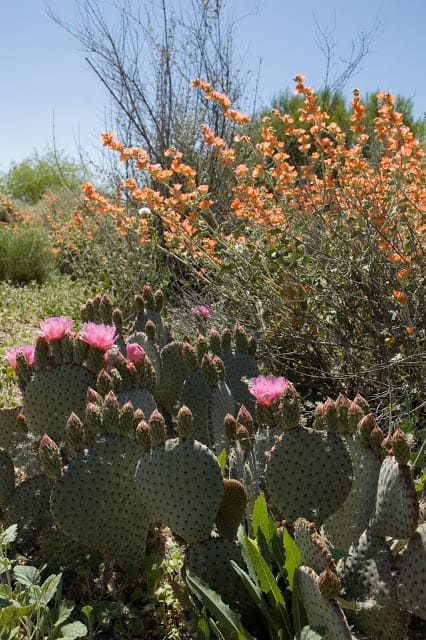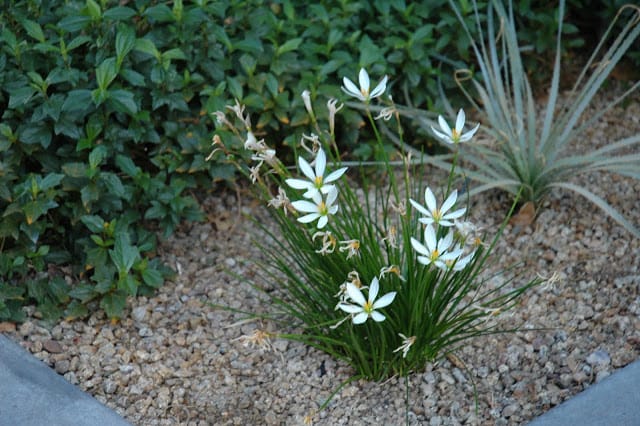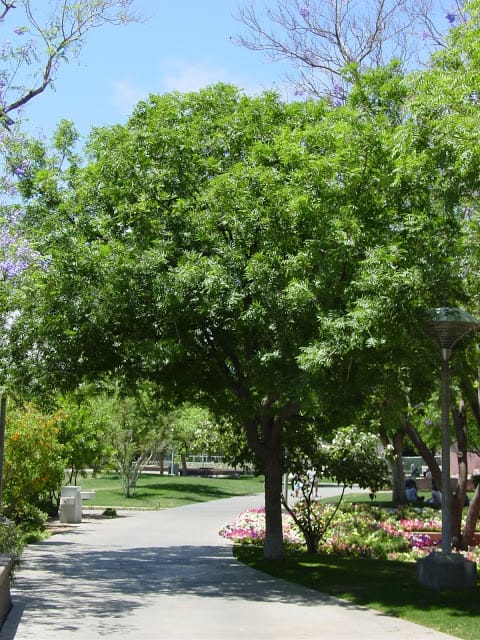As most would expect, water is considered a precious resource in the desert. But, did you know that there are more plant problems caused due to over-watering then under-watering?
Believe it or not, it is true. Most people are surprised to hear that up to 70 percent of residential water usage goes to watering trees and plants in your landscape. This high percentage is because many homeowners overwater their trees and plants.
During college, I was fortunate to intern at the City of Mesa Water Conservation Office. The lessons that I learned there would last a lifetime. Nowadays, when I visit clients to help them with their landscapes, over 90 percent of the time I find that their irrigation schedule is incorrect — they water too lightly and too often.

This results in shallow roots and salt build-up in and around the root zone. (If you have seen a white substance around your plants, there is a good chance that it is the salts from the soil. And just an FYI — just like high amounts of salt are not good for us, they are not good for plants either.)
Overwatering will weaken your plants, especially during the summer since their roots are close to the surface where they become hot and can dry out much more quickly.
It’s important to note that plants need to be watered deeply, which does two things. First, it causes the roots to grow deeper into the soil, where it is cooler and stays moister longer. Secondly, it helps to reduce the salts in the soil and keeps them away from the root zone.
Your plants do not need the same amount of irrigation all year. Plants follow the weather — the hotter it is, the more water they need and when temperatures dip, the less that they need. For example, I water my garden once every 20 days in the winter, (excluding grass and annuals), and it is healthy and looks great. If you only take one thing from this article, then please let it be this. CHANGE THE WATERING SCHEDULE ON YOUR IRRIGATION CONTROLLER SEASONALLY.
Now, you are probably asking, “How do I know what schedule my plants and lawn should be on?” Well, the folks at Water – Use It Wisely are coming to your rescue. They have excellent information for the homeowner on the proper irrigation schedule for your plants. You can view it here: Landscape Watering Guide.
This guide was made for people who reside in the Phoenix metropolitan area. However, people who live in dry climates everywhere will find useful information regarding irrigation. **Most cities have information for their residents regarding watering schedules for their local climate. You can also contact your local cooperative extension office who often have this information as well.

If you find that you have been over-watering your plants, make sure that when you switch to the correct irrigation schedule, that you gradually change the schedule so that your plants have a chance to adjust.
Making sure you have the correct irrigation schedule lets you have healthier plants, a lower water bill, and helps conserve water.
**For those of you not familiar with drip irrigation. The primary way the southwest waters their plants. Water is brought to the plant by a series of plastic pipes, tubing, and emitters. The emitters drip water slowly to the root zone of the plant, reducing runoff and allowing the water to permeate deeply into the soil, which saves water.
This article originally appeared in October 2009 and is being republished with permission. Water – Use It Wisely is proud to feature guest bloggers who write about topics related to water and water conservation. The author of this blog, Noelle Johnson, is an urban horticulturist, certified arborist, and freelance garden-writer who helps people create beautiful, low-maintenance gardens through helpful advice on her blog www.azplantlady.com. She is passionate about teaching people about the amazing desert plants that thrive in our landscapes.


